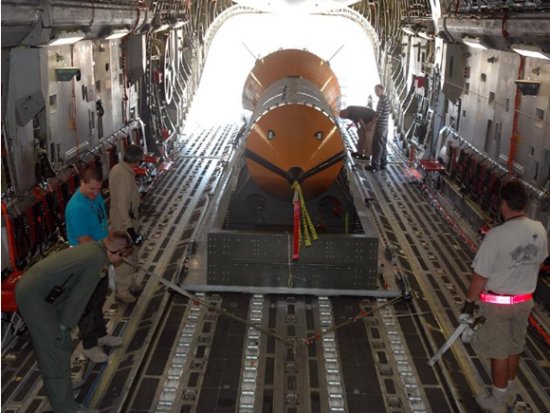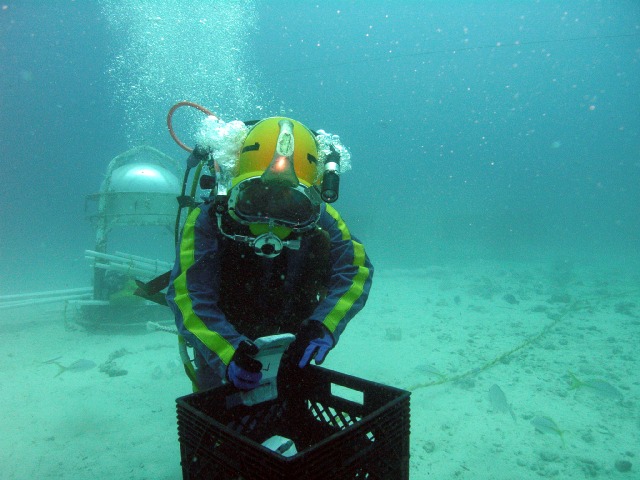How do you stop a 200,000-pound solid rocket motor from ending up at the bottom on the Atlantic Ocean? With the biggest, strongest rocket parachutes ever built of course! And they are snuggly packed in the forward section of the Ares I-X rocket, awaiting their debut performance. The Ares I-X flight will be the first full flight test of the Ares I first stage parachute system.

NASA and ATK have successfully conducted nine development tests of the parachute
system including the main cluster parachute test on May 20, 2009. Credit: U.S. Army
Yuma Proving Ground (Watch the test, Windows, streaming)
NASA, ATK and other partners have successfully tested each element of the parachute system. In fact, over the last three years, the team has conducted three pilot, two drogue, three single main, and one main cluster parachute drop tests at Yuma Proving Ground in Yuma, Az.
But Ares I-X will be the best test of the whole kit and caboodle because of the unique flight profile.
“You simply can’t drop 200,000 pounds out of a plane. The only way we can do drop testing is from a C-17 aircraft and there is a 90,000 pound load limit. The Ares booster weighs more than double that,” said Ron King, Ares first stage deceleration subsystem manager at NASA’s Marshall Space Flight Center in Huntsville, Al. “And Ares I-X is the only test of the entire flight sequence from start to finish, or separation to splashdown as it will be.”

On October 9, 2009 NASA and industry engineers dropped a 72,000 pound test payload
from the back of a U.S. Air Force C-17 aircraft from an altitude of 25,000 feet, tying the
record for the heaviest load ever extracted from the aircraft during flight. This drop test
was designed to push the main parachute’s canopy to its limit — supporting a
250,000-pound dynamic load. The payload included the main parachute for the Ares I
rocket. Credit: U.S. Army Yuma Proving Ground
The Ares deceleration system consists of three types of parachutes: (1) a small pilot chute which pulls out the drogue chute; (2) a 68-foot diameter drogue chute and (3) three 150-foot diameter main parachutes. Here’s how the sequence goes:
The Ares I-X first stage separates from the upper stage at 124 seconds into the test flight, at an altitude of 130,000 feet. The vehicle’s four tumble motors then fire to slow the first stage for its return trip to Earth and eventual recovery. At an altitude of about 15,000-feet the nose cone is jettisoned, immediately deploying the pilot parachute. The pilot chute will in turn deploy the 68-foot drogue parachute, which is the workhorse of the system and will re-orient the booster to vertical and slow it to acceptable conditions for main parachute deployment. At about 4,000 feet, the separation at the base of the forward skirt extension occurs, pulling out the three 150-foot diameter main chutes packed within. These majestic red, white and blue canopies slow the booster even more, carrying it gently to splashdown.

Artist concept of the Ares I-X first stage recovery sequence. Credit: ATK
“The velocity and re-entry environments we’ll see on Ares I-X are a bit less than Ares I, but we will get a great deal of data to help us refine the final flight hardware designs,” said King. “We can’t wait to see our giant parachutes off the coast of Florida.”
Jennifer Morcone, NASA Marshall Space Flight Center public affairs office

